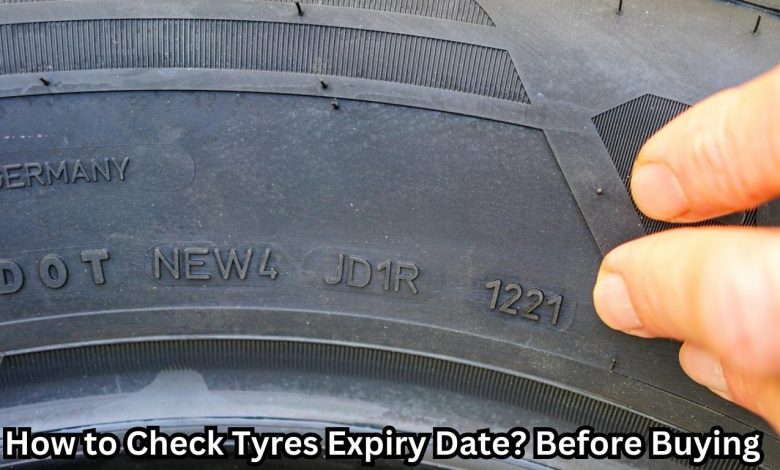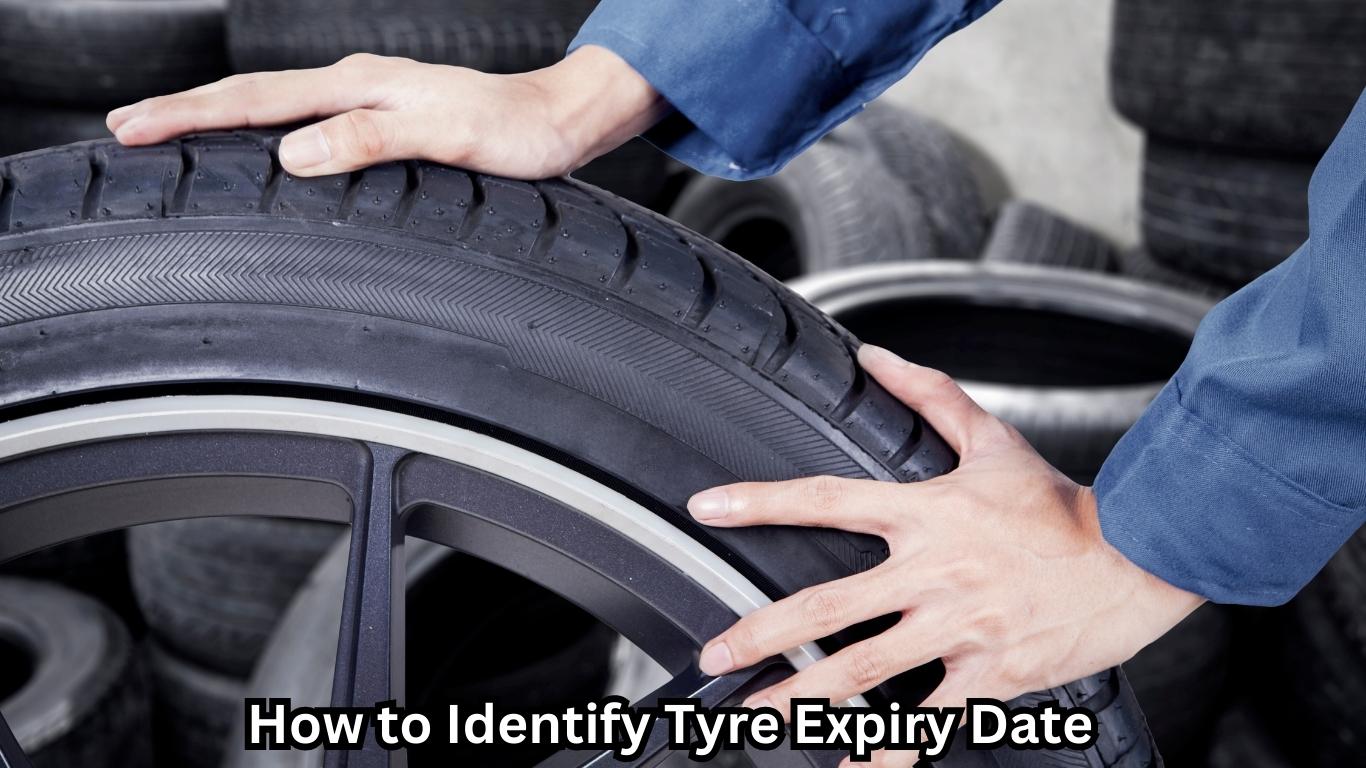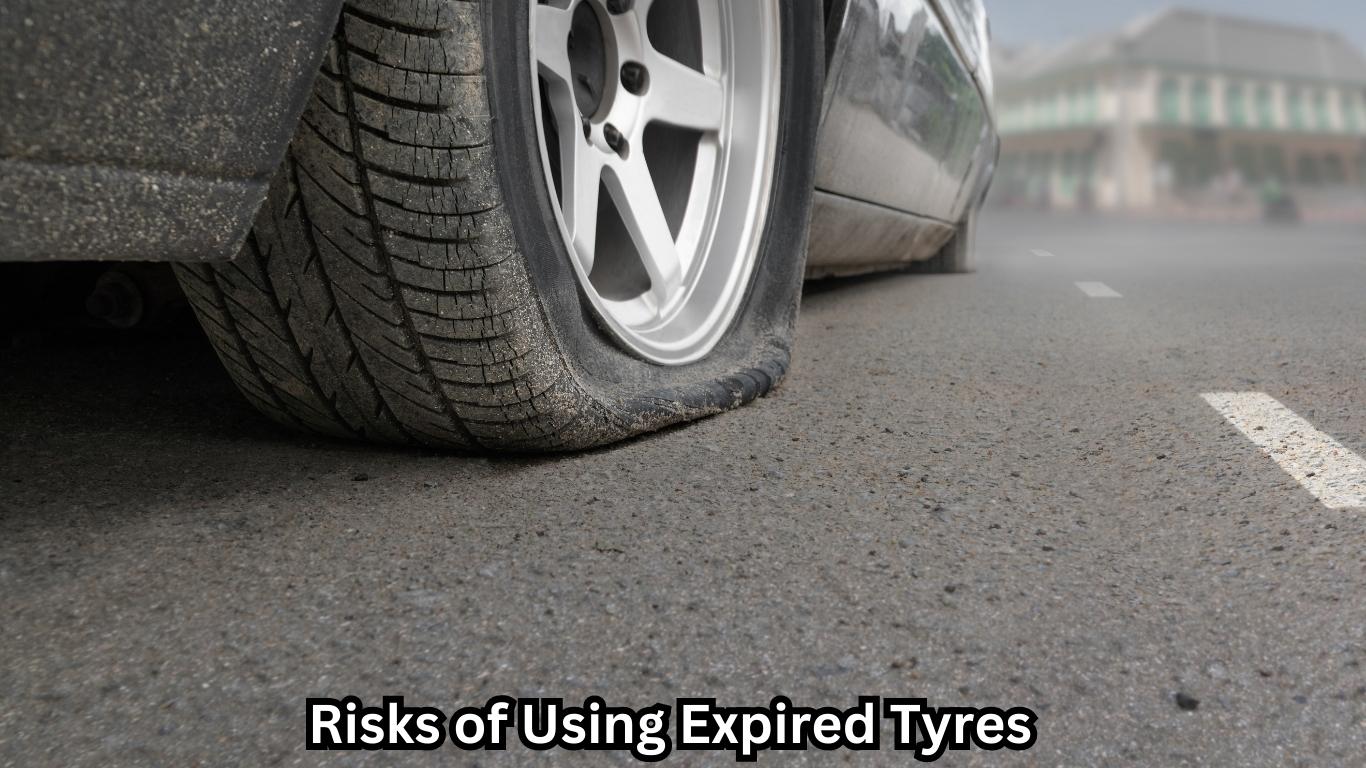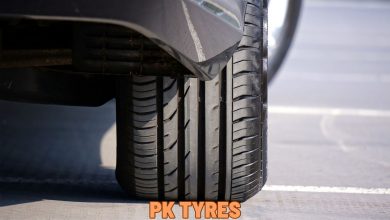
타이어의 만료 날짜를 확인하는 것은 종종 많은 운전자들이 간과하는 차량 유지 관리의 중요한 측면입니다. 타이어는 마모되어 너무 오래되면 위험할 수 있습니다. 안전운전을 위해 유효기간을 확인하세요. 타이어 수명은 구조, 재료 및 용도에 따라 다릅니다. 큰 문제가 발생하지 않도록 유통기한을 확인하세요. 운전 중 성능이 좋지 않을 수도 있고 위험할 수도 있습니다.
만료된 타이어 사용으로 인한 잠재적 위험
유효기간이 지난 타이어를 사용하면 운전자와 승객의 안전을 위협할 수 있는 심각한 위험이 따릅니다. 타이어가 너무 오래되면 문제가 발생할 수 있습니다. 가장 큰 걱정 중 하나는 타이어의 고무가 마모되어 안전 운전이 더 어려워질 수 있다는 것입니다. 제동 거리가 길어지고 제어력이 저하되며 사고가 더 많이 발생할 수 있습니다.
더욱이, 만료된 타이어는 파열될 가능성이 더 높습니다. 고무 화합물은 노화됨에 따라 탄력성을 잃고 부서지기 쉬워 갑작스러운 고장에 취약해집니다. 폭발은 특히 고속에서 매우 위험할 수 있습니다. 운전자가 차량에 대한 통제력을 상실하여 잠재적으로 치명적인 결과를 초래할 수 있기 때문입니다.
만료된 타이어 사용과 관련된 또 다른 위험은 수막 현상의 가능성이 증가한다는 것입니다. 타이어가 노후화됨에 따라 도로 표면에서 물을 배출하는 능력이 감소합니다. 타이어가 마모되면 도로를 접지력도 잃게 됩니다. 이는 외부가 젖어 있을 때 차량을 제어하지 못할 수도 있음을 의미합니다.
더욱이, 만료된 타이어를 사용하는 것은 법적인 영향을 미칠 수 있습니다. 만료된 타이어를 장착한 채 운전하는 것은 많은 지역에서 불법입니다. 경찰은 자동차에 만료된 타이어가 있는지 확인합니다. 만료된 타이어를 장착한 운전자는 벌금이나 처벌을 받을 수 있습니다. 타이어는 안전상의 이유로 교체해야 하며 규정을 준수해야 합니다.
도로에서 안전을 유지하려면 타이어의 만료일을 확인하는 것이 중요합니다. 만료된 타이어를 사용하면 성능 저하, 사고 위험 증가, 잠재적인 법적 결과를 초래할 수 있습니다. 정기적으로 만료 날짜를 확인하고 필요한 경우 타이어를 교체함으로써 운전자는 최적의 성능을 보장하고 타이어 고장으로 인한 사고 가능성을 줄일 수 있습니다. 타이어를 관리하는 것은 귀하의 안전과 도로 위의 다른 사람들의 안전을 위해 매우 중요합니다. 타이어 유지 관리의 우선 순위를 기억하세요!
타이어 유통기한 이해하기
타이어 사용기한은 타이어가 안전하고 적합한 것으로 간주되는 기간을 나타냅니다. 타이어 제조업체는 빌드, 재료 및 예상 용도에 따라 이를 결정합니다. 일반적으로 만료 날짜는 타이어 측벽에 제조 주와 연도를 나타내는 4자리 숫자로 표시됩니다. 타이어를 적절한 시기에 사용하려면 이 날짜를 아는 것이 중요합니다.
타이어 성능 저하에 영향을 미치는 요인
시간이 지남에 따라 타이어 성능이 저하되는 데에는 여러 가지 요인이 영향을 미치고 결국 수명이 다하게 됩니다. 타이어의 고무는 자연스럽게 노화되어 품질에 영향을 미칩니다. 타이어는 외부 노출로 인해 손상될 수 있습니다. 유연성을 잃고 제대로 작동하지 않을 수도 있습니다. 자외선, 덥거나 추운 날씨, 혹독한 조건은 노화를 더 빠르게 만들 수 있습니다.
또 다른 요인은 정기적인 사용 중에 발생하는 마모입니다. 시간이 지나면서 타이어의 트레드가 노면과의 마찰로 인해 점차 마모됩니다. 타이어 트레드의 깊이가 낮아지면 타이어가 도로를 잘 견디지 못하고 효과적으로 브레이크를 밟을 수 없습니다. 안전한 운전을 위해 타이어의 트레드 깊이를 자주 확인해야 합니다.
부적절한 유지 관리 관행도 타이어 성능 저하에 영향을 줄 수 있습니다. 다양한 요인으로 인해 타이어가 예상보다 빨리 마모됩니다. 예를 들어, 충분히 팽창되지 않은 경우 공기가 너무 많이 추가되거나 바퀴가 올바르게 정렬되어야 합니다. 이러한 문제는 공격적인 가속, 급제동, 고속 코너링과 같은 추가 운전 습관을 유발할 수 있으며, 이로 인해 타이어 마모가 가속화되고 수명이 단축될 수도 있습니다.
타이어 유통기한에 대한 일반적인 오해
운전자는 종종 타이어 만료에 대한 일반적인 통념을 명확히 해야 합니다. 이로 인해 잘못된 정보가 발생할 수 있습니다. 널리 퍼진 통념 중 하나는 트레드 깊이가 충분한 타이어는 연령에 관계없이 사용해도 안전하다는 것입니다. 타이어 성능은 트레드 깊이에 따라 다르지만 중요한 것은 그것만이 아닙니다. 트레드가 여전히 상당하더라도 고무 화합물은 시간이 지남에 따라 성능이 저하됩니다.
또 다른 신화는 실내나 햇빛이 없는 곳에서 이상적인 조건에 보관된 타이어는 만료되지 않는다는 것입니다. 타이어를 올바르게 보관하면 노화를 지연시키는 데 도움이 되지만 영원히 지속되지는 않습니다. 고무 화합물은 보관 조건에 관계없이 결국 분해됩니다.
일부 운전자들은 타이어가 보기에 좋고 마모가 보이지 않으면 교체할 필요가 없다고 생각합니다. 그러나 타이어의 상태가 양호하더라도 유통기한이 지났으므로 성능 문제와 안전 위험이 발생할 수 있습니다. 또한 읽을 수 있는 내용은 자동차에 사용되는 다양한 유형의 타이어 탐색입니다.
타이어 제조업체와 전문가의 정확한 정보를 신뢰하는 것이 잘못된 이야기에 빠지는 것보다 낫습니다. 정기적으로 타이어 유통기한을 확인하고 타이어 성능 저하에 영향을 미치는 요인을 이해하면 운전자가 타이어 유지 관리 및 교체에 관해 현명한 결정을 내리는 데 도움이 될 수 있습니다.
타이어 만료 날짜를 식별하는 방법
타이어의 만료 날짜를 확인하기 위한 첫 번째 단계는 제조 날짜 코드를 찾는 것입니다. 코드는 타이어 측면에 있으며 숫자나 문자로 구성되어 있습니다. 타이어 제조업체에서는 날짜 코드를 다양한 형식과 위치에 넣을 수 있으므로 기억해 두는 것이 좋습니다.

제조 날짜 코드 디코딩
타이어가 언제 만들어졌는지 확인하려면 제조 날짜 코드와 이를 해독하는 방법을 알아야 합니다. 일반적인 방법은 4자리 숫자를 갖는 것입니다. 처음 두 개는 생산 주를 나타내고 마지막 두 개는 연도를 나타냅니다.
타이어의 수명 결정
제조 날짜 코드를 기준으로 타이어의 연식을 확인하려면 해당 코드가 생산 주와 연도를 나타낸다는 점을 이해하는 것이 중요합니다. 예를 들어, 코드가 ‘2418’이라면 2018년 24주차에 생산된 타이어입니다.
타이어의 수명을 계산하려면 현재 연도에서 생산 연도를 뺍니다. 예를 들어, 현재 연도가 2023년이고 타이어가 2018년에 생산되었다면 타이어는 5년이 됩니다. 나이를 계산할 때 월뿐만 아니라 일년 전체를 고려하십시오.
타이어 제조업체는 3자리 코드를 사용할 수 있습니다. 처음 두 자리는 타이어가 만들어진 주를 나타냅니다. 세 번째 숫자는 특정 10년의 연도를 나타냅니다. 이 경우, 제조업체의 지침을 참조하거나 타이어의 수명을 정확하게 판단하기 위해 도움을 구하는 것이 중요합니다.
타이어 제조업체가 만료 날짜를 결정하므로 해당 규칙을 따르십시오. 중요해요! 타이어에 대해 보편적으로 합의된 만료 날짜는 없지만, 대부분의 제조업체는 트레드 깊이에 관계없이 6~10년 된 타이어를 교체할 것을 권장합니다. 그러나 권장 사용 기한이 되기 전에 타이어의 성능 저하나 마모의 징후가 나타나면 도로 안전을 위해 즉시 교체하는 것이 좋습니다.
만료된 타이어의 징후
만료된 타이어를 식별하는 한 가지 방법은 노화 징후를 육안으로 검사하는 것입니다. 타이어의 측벽이나 트레드 표면에 눈에 보이는 균열이 있는지 찾아보십시오. 건조 부패로 알려진 이러한 균열은 타이어 성능 저하를 명확히 나타내며 타이어의 구조적 무결성을 손상시킬 수 있습니다. 또한 측벽에 부풀어오른 부분이나 물집이 있는지 검사하십시오. 이는 내부 손상을 나타내며 갑작스러운 타이어 고장의 심각한 위험을 초래할 수 있습니다. 타이어에 이상한 점이 보이면 무시하지 말고 즉시 점검을 받으십시오.
트레드 깊이 및 마모 표시기 테스트
타이어의 트레드 깊이를 확인하는 것은 타이어가 오래되어 교체가 필요한지 파악하는 데 매우 중요합니다. 타이어의 트레드에는 마모될수록 더욱 눈에 띄는 작은 막대가 있습니다. 이를 트레드 마모 표시기라고 하며 타이어 교체 시기를 알려줍니다. 트레드 깊이 게이지나 “페니 테스트”를 사용하여 트레드 깊이를 측정합니다. 트레드 깊이가 심하게 마모되어 마모 표시기에 접근하거나 최소 법적 제한 미만인 경우 타이어는 더 이상 사용하기에 안전하지 않으며 교체해야 합니다.
타이어 열화의 기타 지표
타이어의 모양과 트레드가 얼마나 마모되었는지 확인하는 것 외에도 타이어가 오래되었음을 나타내는 몇 가지 징후가 있습니다. 타이어 표면에서 고르지 않은 마모 패턴의 흔적을 찾으십시오. 고르지 못한 타이어 마모는 타이어가 균등하게 마모되지 않을 때 발생합니다. 이는 잘못된 타이어 공기압, 정렬 문제 또는 자동차 서스펜션 문제로 인해 발생할 수 있습니다. 주행 중 차량의 진동이 너무 심하면 타이어가 마모될 수 있습니다.
핸들링과 성능의 변화에 주의하십시오. 타이어가 오래되었거나 낡으면 자동차의 성능이 저하될 수 있습니다. 이에 대한 징후에는 도로 접지력이 떨어지고, 제동 거리가 길어지며, 차량을 조종하기가 더 어려워지는 것이 포함됩니다.
수명이 만료된 타이어의 또 다른 지표는 젖은 노면에서 접지력이 상실되는 것입니다. 오래된 타이어는 물을 잘 분산시키지 못하기 때문에 물에 떠 있을 가능성이 더 높습니다. 젖은 도로에서 견인력이 감소하거나 타이어 접지력이 저하된 것을 발견한 경우 타이어 교체를 고려하는 것이 중요합니다.
강한 고무 냄새와 같은 악취도 타이어 성능 저하를 나타낼 수 있습니다. 이러한 냄새는 고무 화합물이 분해되고 타이어 수명이 한계에 도달했음을 의미할 수 있습니다. 다음 글도 읽어 보세요: 타이어 트레드 깊이: 의미 및 중요성.
타이어의 안전을 보장하기 위해서는 타이어에 마모 흔적이 있는지 자주 점검하는 것이 중요합니다. 이러한 징후 중 하나라도 관찰되면 즉각적인 조치를 취해야 합니다. 수명이 다한 타이어로 운전하는 것은 위험합니다. 이는 자동차의 성능을 저하시키고 사고 위험을 증가시킵니다. 타이어를 정기적으로 점검하고 필요할 때 교체하여 안전을 유지하십시오. 귀하와 다른 사람의 안전이 이에 달려 있습니다.
만료된 타이어 사용의 위험
만료된 타이어를 사용하면 견인력과 핸들링이 감소하는 등 심각한 위험이 따릅니다. 또한 오래된 타이어는 시간이 지남에 따라 고무가 악화되기 때문에 도로를 지탱하지 못합니다. 이로 인해 특히 습하거나 미끄러운 조건에서 견인력이 감소할 수 있습니다. 견인력이 부족해서 차가 잘 움직이거나 정지하거나 회전할 수 없습니다. 자동차는 제어하기가 더 어렵고 사고 위험도 더 높습니다.

폭발 및 사고 위험 증가
만료된 타이어는 펑크가 발생할 가능성이 더 높으며 이는 매우 위험할 수 있습니다. 고무는 시간이 지날수록 약해집니다. 이로 인해 빨리 실패할 가능성이 높아집니다. 차량이 주행하는 동안 타이어가 터져 공기압이 급격히 낮아지면 파열이 발생합니다. 운전 중 통제력을 잃으면 사고가 발생할 수 있습니다. 폭발은 빠르게 운전하거나, 차선을 변경하거나, 커브를 돌 때 위험할 수 있습니다. 이는 위험한 운전 상황에서 염두에 두는 것이 중요합니다.
만료된 타이어 사용의 법적 의미
만료된 타이어를 사용하는 것도 법적 영향을 미칠 수 있습니다. 많은 곳에서는 타이어를 교체해야 할 시기가 지난 후에 사용하는 것에 대한 규칙을 갖고 있습니다. 경찰은 차량을 자주 점검합니다. 오래된 타이어를 발견하면 운전자는 티켓을 받거나 돈을 지불하거나 차를 잃을 수 있습니다. 이를 따르려면 해당 지역의 타이어 만료에 관한 법률을 알아야 합니다. 이는 법률 문제를 피하는 데 도움이 될 것입니다.
만료된 타이어를 사용하고 사고가 발생한 경우 보험 청구에 영향을 미칠 수 있습니다. 보험회사에서는 사고 발생 시 타이어를 확인할 수 있습니다. 만료된 타이어가 발견되면 운전자의 보장이 영향을 받거나 청구가 거부될 수 있습니다. 오래된 타이어를 교체하고 권장 수명을 준수하는 것이 중요합니다. 사고 발생 시 보험을 유효하고 안전하게 유지하는 데 도움이 됩니다.
적절한 타이어 유지 관리
적절한 타이어 유지 관리의 필수 요소 중 하나는 정기적으로 타이어 공기압을 확인하는 것입니다. 적절하게 공기를 주입한 타이어는 최적의 성능, 안전성 및 수명을 보장합니다. 타이어에 공기가 완전히 주입되지 않으면 자동차의 연비, 스티어링 및 타이어 마모가 손상될 수 있습니다. 타이어에 공기압이 너무 많으면 승차감이 울퉁불퉁해지고 도로 접지력이 떨어지며 타이어가 손상될 가능성이 높아집니다. 올바른 압력은 사용 설명서나 타이어 제조업체 가이드를 확인하세요. 게이지를 사용하여 타이어 공기압을 자주 확인하고 필요에 따라 공기를 추가하거나 방출하여 최상의 수준을 유지하십시오.
균일한 마모를 위한 회전형 타이어
타이어 교체는 타이어 수명을 연장하는 훌륭한 방법입니다. 고르게 착용되도록 교체하는 것을 의미합니다. 타이어의 고르지 못한 마모는 자동차의 무게, 제작 방식, 운전 방식 등의 요인으로 인해 발생합니다. 타이어의 수명을 연장하려면 6,000~8,000마일마다 또는 제조업체의 조언에 따라 타이어를 교체하십시오. 이렇게 하면 마모가 분산되어 더욱 균일해집니다. 차량과 타이어 설정에 따라 회전 방식이 다를 수 있습니다. 타이어 교체의 올바른 방법은 자동차 매뉴얼을 확인하거나 전문가에게 문의하세요.
타이어의 올바른 보관으로 수명 연장
타이어를 사용하지 않을 때 타이어를 적절하게 보관하는 것은 수명을 연장하는 데 매우 중요합니다. 타이어를 보관할 때는 다음 지침을 따르십시오.
- 타이어 청소: 타이어를 철저히 청소하여 먼지, 부스러기 또는 화학 물질을 제거하십시오. 순한 비누와 물을 사용하고 고무를 손상시킬 수 있는 강한 화학 물질을 피하십시오.
- 직사광선이 비치지 않거나 너무 덥거나 습한 곳이 아닌 서늘하고 건조한 곳에 타이어를 보관하십시오. 이러한 요소에 노출되면 타이어 성능 저하가 가속화될 수 있습니다.
- 짧은 시간 동안만 타이어를 쌓거나 걸어 두십시오. 이러한 조치로 인해 측벽이 변형되거나 손상될 수 있습니다. 필요한 경우 타이어 랙이나 스탠드를 사용하여 타이어가 서로 닿지 않도록 똑바로 세우고 유지하십시오.
- 오존 발생원으로부터 타이어를 보호하십시오. 오존은 고무에 균열을 일으키고 마모될 수 있습니다. 타이어를 전기 모터, 발전기 및 기타 오존 발생원으로부터 멀리 두십시오.
- 차량을 보관하기 전 반드시 타이어 공기압을 확인하세요. 적절한 보관을 위해 타이어에 권장 수준까지 공기를 주입하십시오. 이는 모양을 유지하는 데 도움이 되고 평평한 반점이 형성되는 것을 방지합니다.
타이어를 올바르게 보관하면 타이어의 수명을 연장하고 좋은 상태를 유지할 수 있습니다. 이렇게 하면 필요할 때 다시 사용할 수 있습니다.
타이어 교체 시기
타이어에는 정해진 만료 날짜가 없지만 일반적인 연식 지침에 따라 교체해야 합니다. 대부분의 타이어 제조업체는 트레드 깊이에 관계없이 6~10년 된 타이어 교체를 권장합니다. 이 권장 사항은 타이어 상태가 양호해 보이더라도 시간이 지남에 따라 고무 화합물의 자연적인 성능 저하를 고려합니다. 이러한 지침은 대략적인 것이며 특정 타이어 제조업체와 타이어가 사용되는 기후 및 운전 조건에 따라 달라질 수 있다는 점에 유의하는 것이 중요합니다.
타이어 교체를 결정할 때 고려해야 할 요소
타이어 교체를 결정할 때 노후화 외에도 고려해야 할 몇 가지 요소가 있습니다.
- 트레드 깊이: 트레드 깊이 게이지나 “페니 테스트”를 사용하여 트레드 깊이를 정기적으로 모니터링하십시오. 트레드 깊이가 마모 표시에 도달하거나 법적 제한(보통 2/32인치 또는 1.6mm) 아래로 떨어지면 타이어를 교체해야 한다는 의미입니다. 타이어에 더 많은 트레드가 필요한 경우 도로를 잘 접지하지 못하고 젖어 있거나 미끄러운 표면에서 미끄러질 수 있습니다.
- 눈에 보이는 징후가 있는지 확인하여 타이어의 마모, 손상 또는 부패 여부를 확인하십시오. 여기에는 측벽이나 트레드 표면의 균열, 돌출, 절단 또는 구멍이 포함됩니다. 이러한 징후가 보이면 타이어를 교체하십시오. 안전과 성능에 좋지 않을 수 있습니다.
- 성능 문제: 차량 핸들링, 제동 또는 승차감 변화에 주의를 기울이십시오. 진동이 발생하거나 정지 거리가 늘어나거나 제어력을 유지하는 데 어려움이 있는 경우 즉각적인 주의가 필요한 타이어 관련 문제가 있음을 나타낼 수 있습니다. 이러한 성능 문제는 마모되거나 손상된 타이어로 인해 발생할 수 있으므로 즉시 교체를 고려해야 합니다.
- 운전 조건 및 사용 패턴: 타이어 교체 여부를 평가할 때 운전 조건 및 사용 패턴을 고려하십시오. 비, 눈, 얼음 등 악천후 속에서 자주 운전한다면 트레드와 접지력이 좋은 타이어를 사용하는 것이 중요합니다. 장거리 운전을 자주 하거나 무거운 짐을 싣는 경우 타이어가 더 빨리 마모될 수 있습니다. 이는 더 자주 교체해야 함을 의미합니다.
- 제조업체 권장 사항: 타이어 제조업체에서 제공하는 특정 권장 사항을 참조하십시오. 타이어의 최대 수명이나 주행 거리에 대한 지침을 제공할 수도 있습니다. 이러한 권장 사항을 준수하면 최적의 성능과 안전을 보장하는 데 도움이 될 수 있습니다.
결론:
타이어의 유통기한을 확인하는 것은 도로 안전을 위해 가장 중요합니다. 타이어는 영원히 지속되지 않습니다. 오래된 타이어를 사용하면 도로를 접지력도 떨어지게 되고, 조종이 더 어려워지며, 심지어 더 쉽게 터질 수도 있습니다. 날짜 코드를 알면 운전자가 타이어의 수명을 이해하는 데 도움이 됩니다. 이 정보는 타이어 교체 시기를 결정하는 데 도움이 될 수 있습니다. 정기적으로 만료 날짜를 확인하면 운전자는 타이어 성능 저하를 즉시 해결하고 잠재적인 위험을 피할 수 있습니다.
수명이 다한 타이어를 교체하여 도로의 안전을 확보하세요
수명이 다한 타이어를 교체하는 것은 도로에서의 안전을 유지하는 데 매우 중요합니다. 만료된 타이어는 파열을 포함하여 고장이 발생하기 더 쉬우며 이로 인해 통제력을 잃거나 사고가 발생할 수 있습니다. 또한 만료된 타이어를 사용하면 차량의 핸들링, 제동 및 전반적인 성능이 저하됩니다. 운전 중 안전을 유지하려면 권장 사항에 따라 오래된 타이어를 교체하는 것이 필수적입니다. 이는 사고 가능성을 줄이고 도로 위의 모든 사람을 더욱 안전하게 지켜줍니다.
최적의 성능을 위해 정기적인 타이어 유지 관리 장려
최적의 성능과 수명을 위해서는 정기적인 타이어 유지 관리가 필수적입니다. 정기적으로 타이어 공기압을 점검하고, 타이어가 균일하게 마모되도록 타이어를 회전시키고, 타이어를 올바르게 보관함으로써 운전자는 타이어의 수명과 성능을 최대화할 수 있습니다. 타이어를 좋은 상태로 유지하는 것이 중요합니다. 도로를 잘 접지하고 잘 다룰 수 있을 만큼 충분한 공기(타이어 공기압)가 있는지 확인하십시오. 또한, 적절한 보관을 도와주고, 열화를 가속화할 수 있는 환경적 요인으로부터 타이어를 보호해줍니다. 정기적으로 타이어를 잘 관리하면 운전을 더 잘할 수 있고, 연료를 절약하고, 타이어 수명을 연장할 수 있습니다.
자주 묻는 질문:
타이어의 만료 날짜를 얼마나 자주 확인해야 합니까?
적어도 1년에 한 번씩 타이어의 만료 날짜를 확인하는 것이 좋습니다. 타이어의 노후화, 마모 및 손상 여부를 자주 점검하는 것이 중요합니다.
유효기간이 지난 타이어를 사용할 수 있지만 트레드 깊이는 여전히 양호합니까?
아니요. 트레드 깊이가 여전히 양호하더라도 유효기간이 지난 타이어를 사용하는 것은 권장되지 않습니다. 타이어는 시간이 지남에 따라 성능이 저하되어 안전성이 떨어집니다. 도로를 잘 잡지 못해 폭발 가능성이 높아집니다. 도로에서 최적의 성능과 안전을 보장하려면 만료된 타이어를 교체하는 것이 가장 좋습니다.
타이어의 나이를 어떻게 알 수 있나요?
타이어의 연식을 확인하려면 타이어 측벽에 있는 제조 날짜 코드를 찾으세요. 날짜 코드는 일반적으로 숫자와 문자의 조합으로 구성됩니다. 마지막 네 자리는 제조 주와 연도를 나타냅니다. 예를 들어, 날짜 코드가 “2718”로 끝나면 2018년 27주차에 생산된 타이어입니다.
만료된 타이어를 사용하면 어떤 위험이 있나요?
오래된 타이어를 사용하면 운전이 안전하지 않을 수 있습니다. 도로를 잘 접지 못하고, 핸들링이 좋지 않으며, 폭발을 일으킬 수 있습니다. 오래된 타이어는 특히 긴급 상황에서 고장나고 사고를 일으킬 수 있습니다.
타이어 수명을 연장할 수 있나요?
타이어는 영원히 지속되지 않습니다. 사용 빈도와 주변 환경에 따라 다릅니다. 하지만 더 오래 지속되도록 할 수 있습니다. 정기적으로 타이어 공기압을 점검하고, 타이어를 회전시켜 균일한 마모를 확인하고, 사용하지 않을 때는 올바르게 보관하면 타이어의 수명을 연장하는 데 도움이 됩니다. 안전하게 운전하면 타이어의 수명을 더 늘릴 수 있습니다. 급제동이나 가속을 피하세요.
만료된 타이어를 사용하는 데 법적 영향이 있나요?
그렇습니다. 만료된 타이어를 사용하면 법적인 영향을 미칠 수 있습니다. 많은 관할권에는 권장 수명을 초과한 타이어 사용에 관한 규정이 있습니다. 만료된 타이어로 운전하면 벌금, 벌금 또는 압류가 발생할 수 있습니다. 주변의 타이어 만료 규칙을 아는 것이 중요합니다. 이는 법률을 준수하고 법적 문제를 피하는 데 도움이 됩니다.
안전이 가장 중요합니다. 타이어가 걱정된다면 전문가에게 문의하세요.




